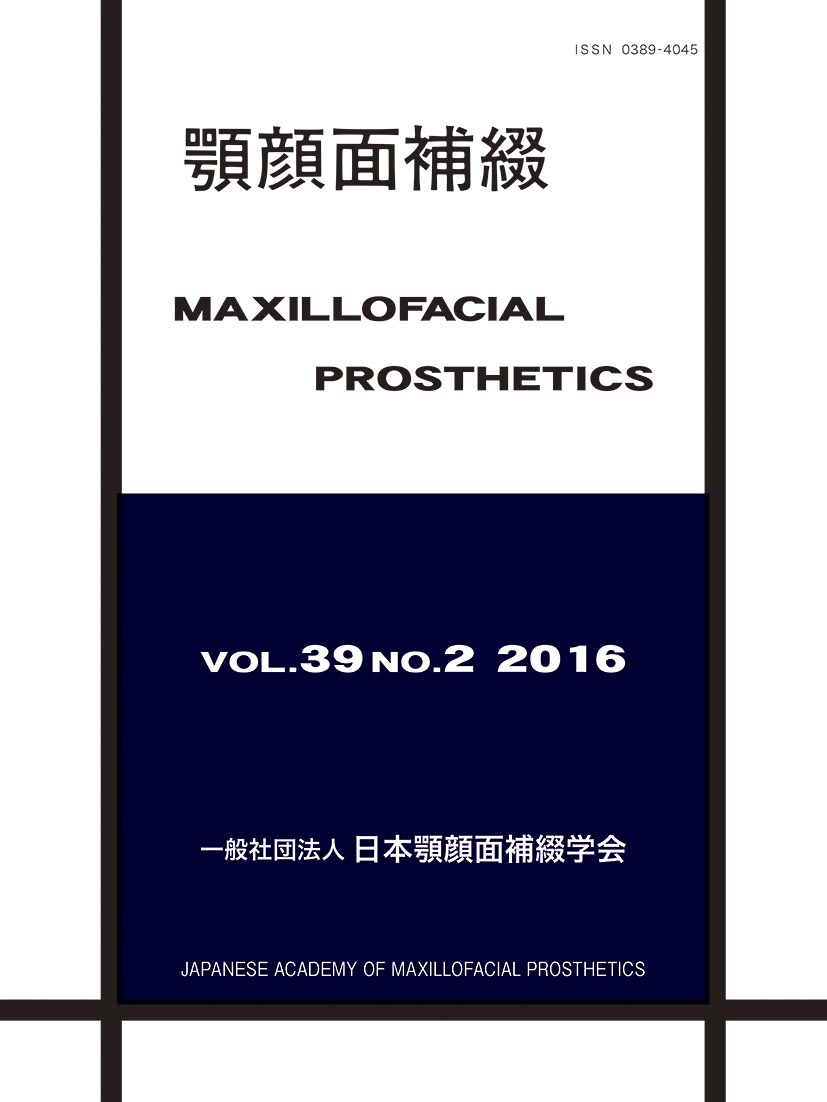39 巻, 2 号
選択された号の論文の17件中1~17を表示しています
- |<
- <
- 1
- >
- >|
総説
-
2016 年 39 巻 2 号 p. 31-35
発行日: 2016年
公開日: 2021/05/29
PDF形式でダウンロード (744K) -
2016 年 39 巻 2 号 p. 36-41
発行日: 2016年
公開日: 2021/05/29
PDF形式でダウンロード (1311K) -
2016 年 39 巻 2 号 p. 42-48
発行日: 2016年
公開日: 2021/05/29
PDF形式でダウンロード (1042K) -
2016 年 39 巻 2 号 p. 49-52
発行日: 2016年
公開日: 2021/05/29
PDF形式でダウンロード (563K)
原著
-
2016 年 39 巻 2 号 p. 53-59
発行日: 2016年
公開日: 2021/05/29
PDF形式でダウンロード (536K) -
2016 年 39 巻 2 号 p. 60-67
発行日: 2016年
公開日: 2021/05/29
PDF形式でダウンロード (777K) -
2016 年 39 巻 2 号 p. 68-73
発行日: 2016年
公開日: 2021/05/29
PDF形式でダウンロード (1261K) -
2016 年 39 巻 2 号 p. 74-79
発行日: 2016年
公開日: 2021/05/29
PDF形式でダウンロード (843K)
研究論文
-
2016 年 39 巻 2 号 p. 80-85
発行日: 2016年
公開日: 2021/05/29
PDF形式でダウンロード (623K) -
2016 年 39 巻 2 号 p. 86-93
発行日: 2016年
公開日: 2021/05/29
PDF形式でダウンロード (1310K)
一般社団法人日本顎顔面補綴学会 第21回教育研修会講演抄録
-
2016 年 39 巻 2 号 p. 94
発行日: 2016年
公開日: 2021/05/29
PDF形式でダウンロード (56K) -
2016 年 39 巻 2 号 p. 95-97
発行日: 2016年
公開日: 2021/05/29
PDF形式でダウンロード (435K) -
2016 年 39 巻 2 号 p. 98-101
発行日: 2016年
公開日: 2021/05/29
PDF形式でダウンロード (703K) -
2016 年 39 巻 2 号 p. 102-104
発行日: 2016年
公開日: 2021/05/29
PDF形式でダウンロード (458K)
一般社団法人日本顎顔面補綴学会 第21回教育研修会座長総括
-
2016 年 39 巻 2 号 p. 105
発行日: 2016年
公開日: 2021/05/29
PDF形式でダウンロード (120K)
一般社団法人日本顎顔面補綴学会 第33回学術大会抄録
-
2016 年 39 巻 2 号 p. 106-131
発行日: 2016年
公開日: 2021/05/29
PDF形式でダウンロード (803K)
一般社団法人日本顎顔面補綴学会 第33回総会・学術大会報告
-
2016 年 39 巻 2 号 p. 132-133
発行日: 2016年
公開日: 2021/05/29
PDF形式でダウンロード (416K)
- |<
- <
- 1
- >
- >|
